Growing willow brittle "Bulat"
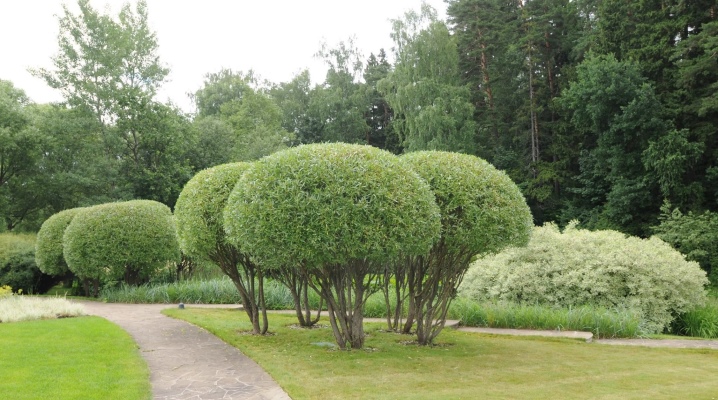
Willow brittle "Bulata" is one of the most attractive representatives of the willow family. The features of the plant make it possible to use it for decorative purposes in landscape design. In the article we will consider the description of the tree, the rules of planting and care, and also tell you how the willow is used to decorate gardens and parks.
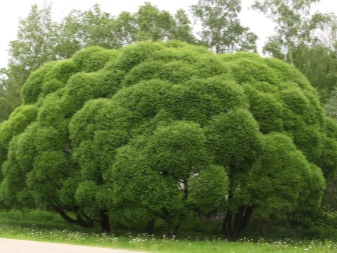
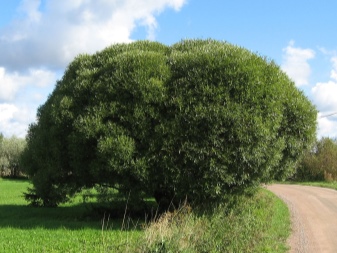
Description
The brittle willow "Bulata", the Latin name Salix fragilis bullata, belongs to the medium-sized rocks and can reach a height of 10-14 meters. The large spherical shape of the crown has a diameter of 8-12 meters. The spreading branches form a kind of umbrella, similar to a neat circle. “Bulata” got its second name “brittle”, as in the fourth year of growth the branches of the plant become very brittle. For the first few years of life, the plant resembles a dense bush, but in adulthood it can have several trunks and a large, spreading crown.
The main feature of this type of willow is the direction of the branches that grow only upward. From a distance, the crown looks like a dark green velor - this is due to the fact that small branches and foliage are concentrated on the outer layer. Inside there are larger branches, similar to the spokes of an umbrella. Even when the foliage begins to fall off, the brittle willow “Bulata” looks very solid due to the close-located shoots, and in winter the plant resembles a forged ball.
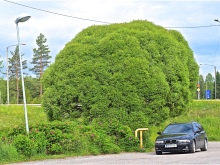
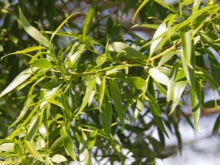
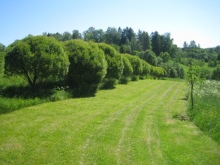
The elongated bright green leaves have a glossy surface that shines in the sun. The length of the leaves is usually 10 cm, and the width is 1.2 cm. In the autumn season, the crown practically does not turn yellow, the foliage falls green. Due to the increased fragility, small branches fall, only the strongest ones remain, forming the backbone of the tree. In March, dark buds begin to appear, almost black. The brittle willow "Bulata" begins to bloom and open leaves at the end of April. The flowers of the plant are yellow earrings with pronounced stamens. This representative of the willow family is an excellent honey plant.
The average life span of a plant is 50-80 years.
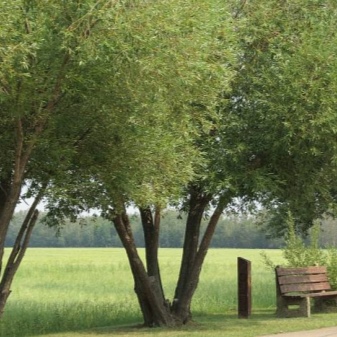
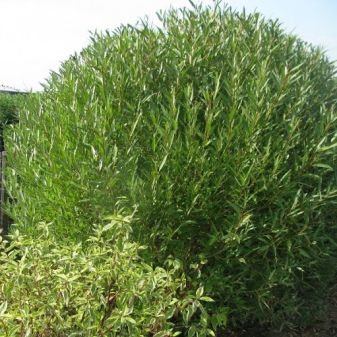
Planting and leaving
Willows are quite unpretentious trees in care and planting. They can adapt to almost any environment. However, to achieve the best effect, it is recommended to plant “Bulat” willow in a sunny place; partial shade is also suitable. The most favorable for a tree is a moist, clayey soil, it is desirable that there is a reservoir nearby to replenish moisture reserves. This plant is able to survive a short drought or waterlogging, but it will not take root on saline and compacted soil.
Try to avoid areas with strong winds - brittle branches fall off so hard. Be sure to shake off the snow so that it does not accumulate on the branches and break them off. The brittle willow “Bulata” takes root well in the city. High frost resistance allows you to survive even an unfavorable winter.
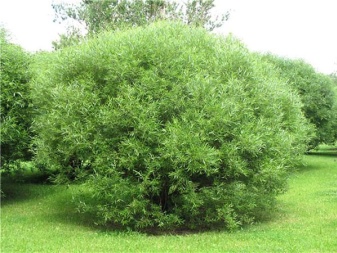
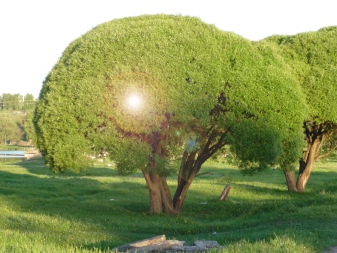
In order for the tree to retain its attractive appearance for a long time, proper care is necessary. While the tree is still growing, it is advisable to tie up the branches to make it easier to withstand strong winds. Regular mulching of the soil will help keep it moist for longer. For young plants, instead of mulching, it is better to carry out a loosening process, which consists in weeding the soil deeply around the trunk. Regular watering is required, especially in the summer, when the sun is hot. Willows are moisture-loving plants.
Feed with special fertilizers and peat once a season... Young shoots must be strengthened in winter. To do this, cover the bottom of the trunk with straw and tie it with a cloth. To give the Bulat willow an interesting look, you can prune the crown at the beginning of April. To begin with, dry and broken branches are removed, and then a neat ball is formed. Additional pruning can be done in summer.


Reproduction
Willow brittle "Bulata" is propagated by cuttings. Often this process occurs naturally, since small branches break off themselves and, falling into the soil, begin to germinate. In some places, real willow thickets appear in this way. To grow a willow from a cutting, you need to stick a branch into the ground, previously moistened with peat. After 10 days, the seedling will take root, after another month it can be transplanted from the pot to the site. This willow breed grows quite quickly and at three years old reaches a height of 4 m, and the crown diameter is 2 m.The older the plant becomes, the more difficult it is for it to transfer a transplant.
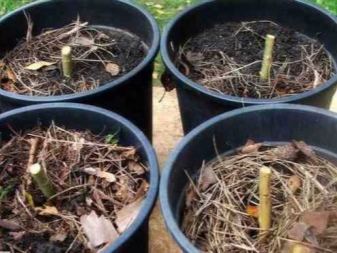
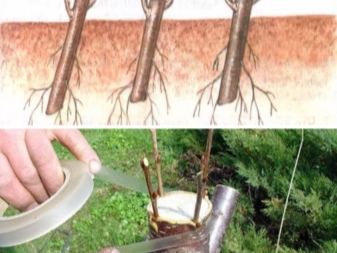
When buying an already grown plant for the site, choose the smallest trees.
Diseases and pests
In general, representatives of the willow family are quite resistant to pests and diseases. Unfortunately, even such hardy plants are sometimes endangered. If the tree is sick, it is necessary to prune the affected areas immediately. To prevent diseases and fungi, the tree trunk is sprayed with special agents. Insects are saved by insecticides, which are sprayed at the bottom of the trunk.
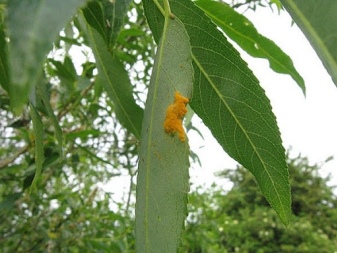

Use in landscape design
Brittle willow "Bulata" is a decorative tree that allows you to create real garden compositions on the site or in the park. Many people organize hedges, planting this breed in a row. "Bulata" can be used both for group planting and as a single accent in the garden. The spherical crown lends itself easily to molding, interesting shapes can be cut out of it.
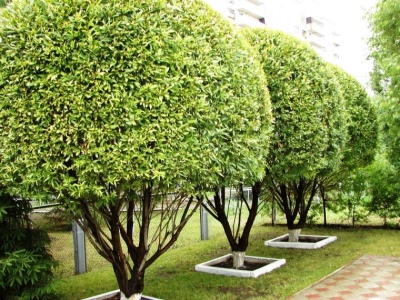
The plant looks especially beautiful in parks in early March, when the trunk of the Bulat willow begins to turn green. Looks very nice from a distance. The cultivated representatives of the plant differ significantly from the wild ones, since the latter are not subjected to regular pruning, respectively, and look less well-groomed. Trees, which are constantly looked after, are incredibly neat and adorn the paths of parks, reservoirs and squares. Many gardeners carve unusual geometric shapes - this type of crown allows you to experiment.

Due to the large size of the cast shadow, the brittle willow "Bulata" is often used to create a cozy resting place in the park or on the site of a country house. The owners of elite cafes and restaurants decorate summer verandas with young individuals. Thanks to the dense crown, visitors will be protected from prying eyes.
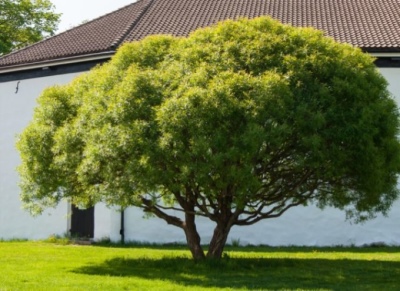
Growing willow brittle "Bulat" in the video below.



































































The comment was sent successfully.